Spray Foam
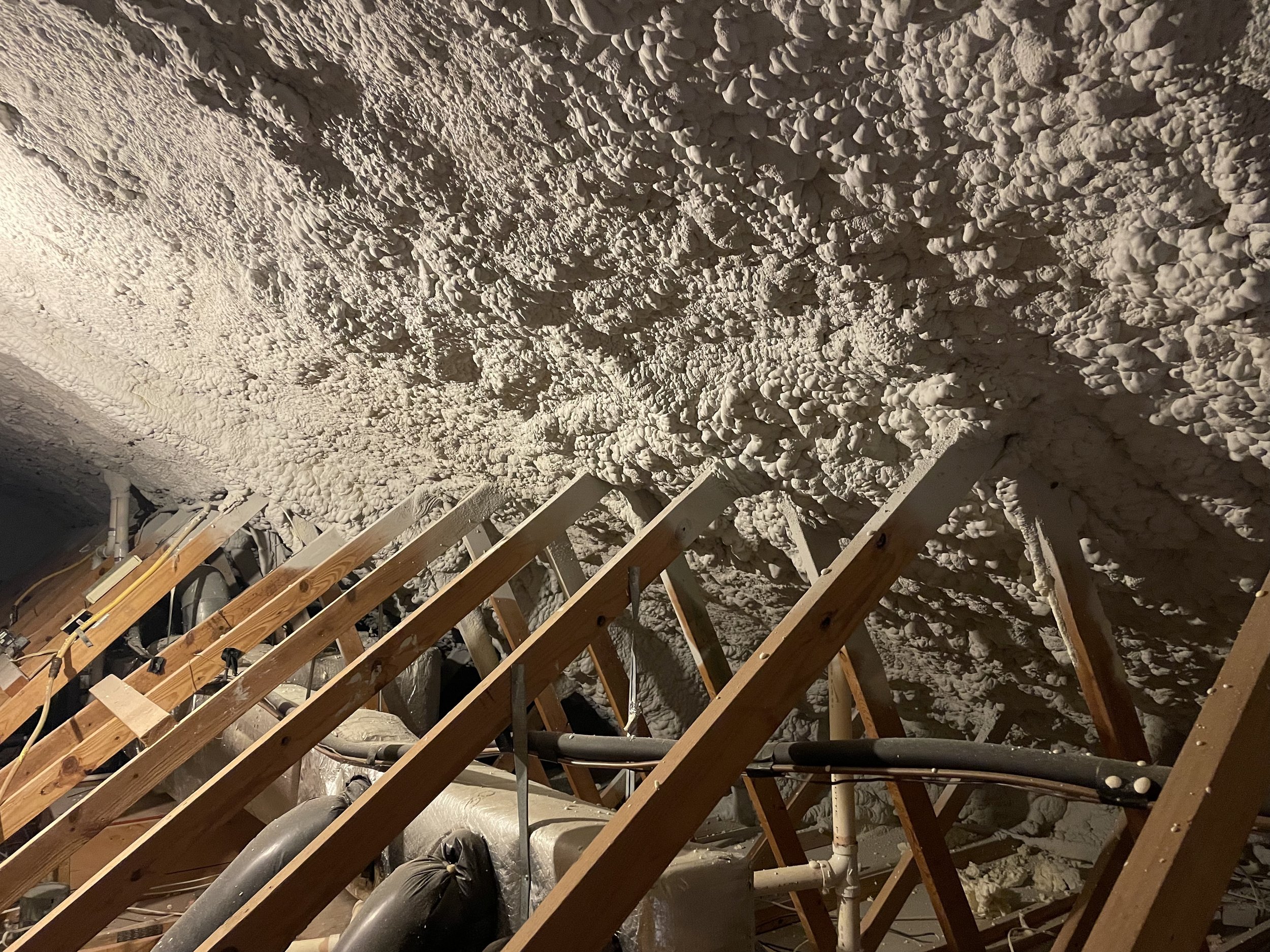
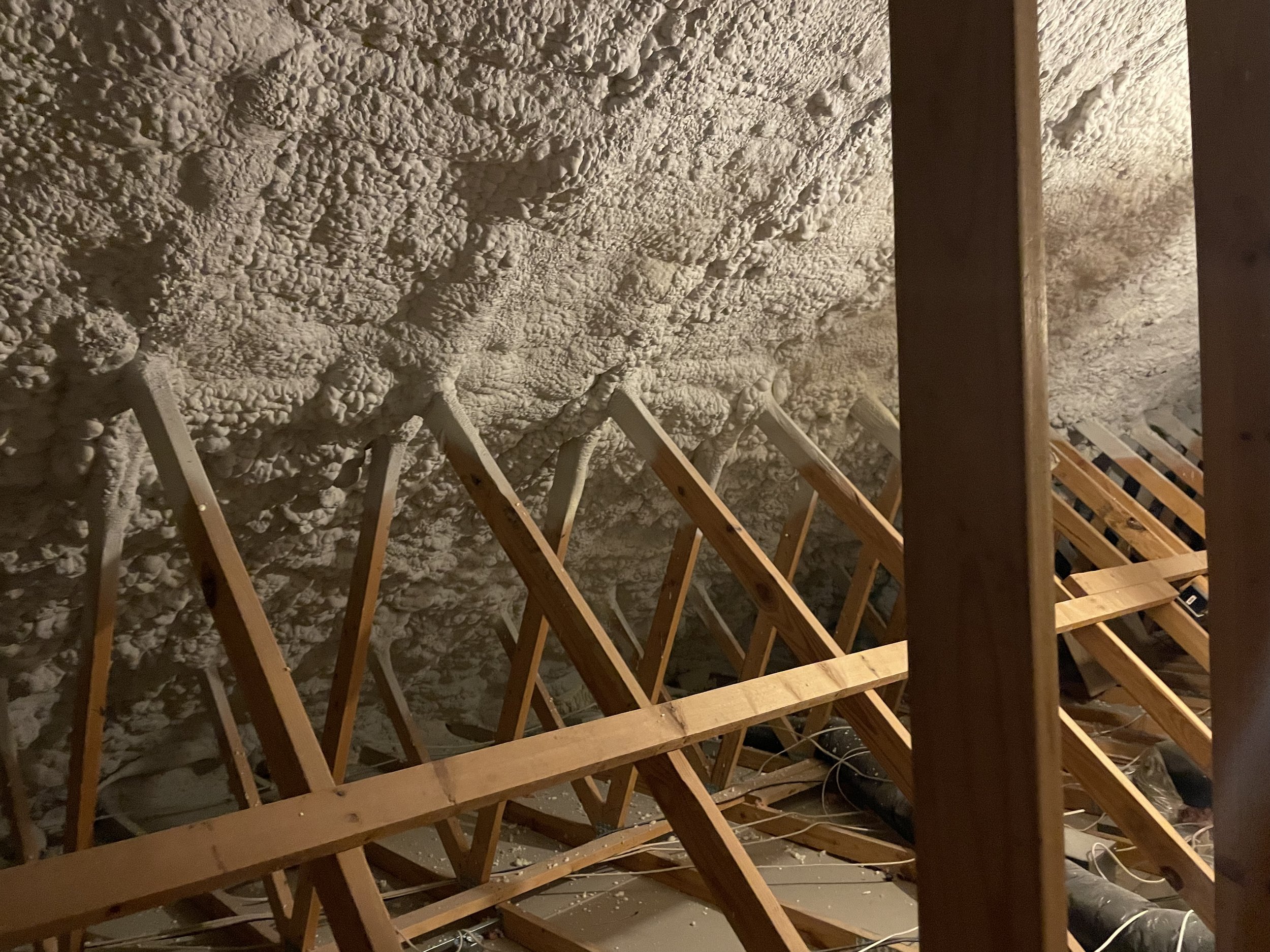
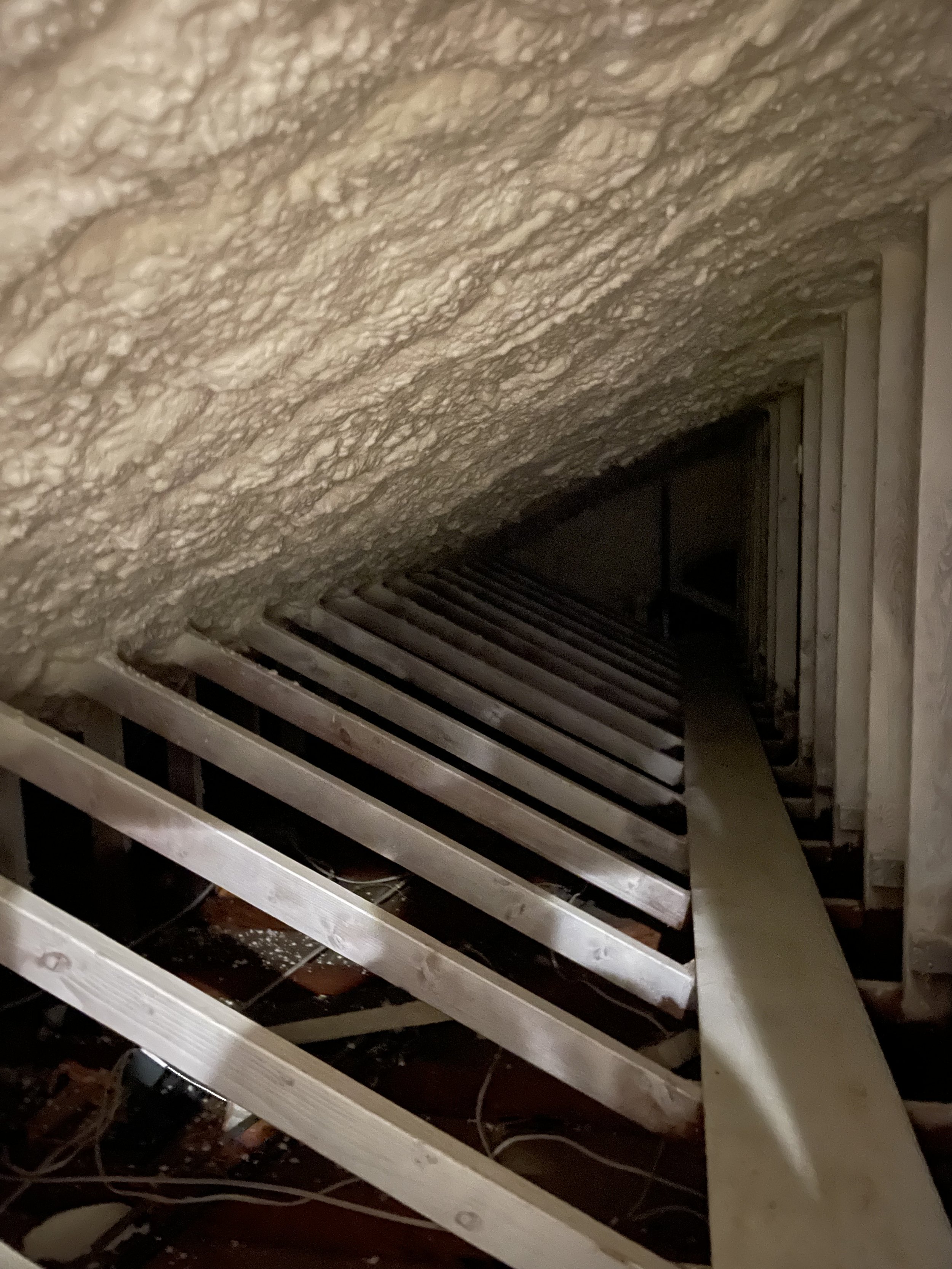
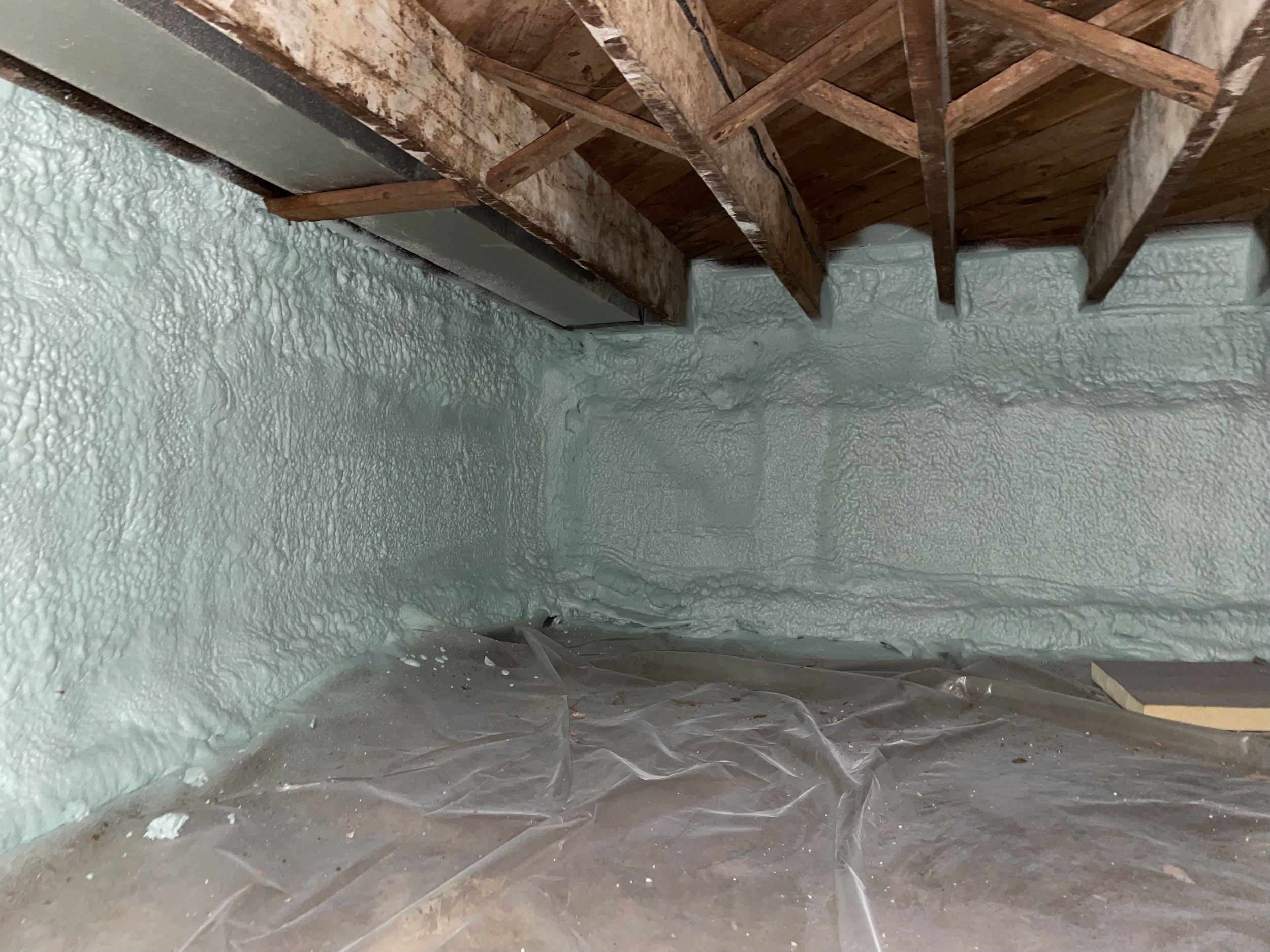
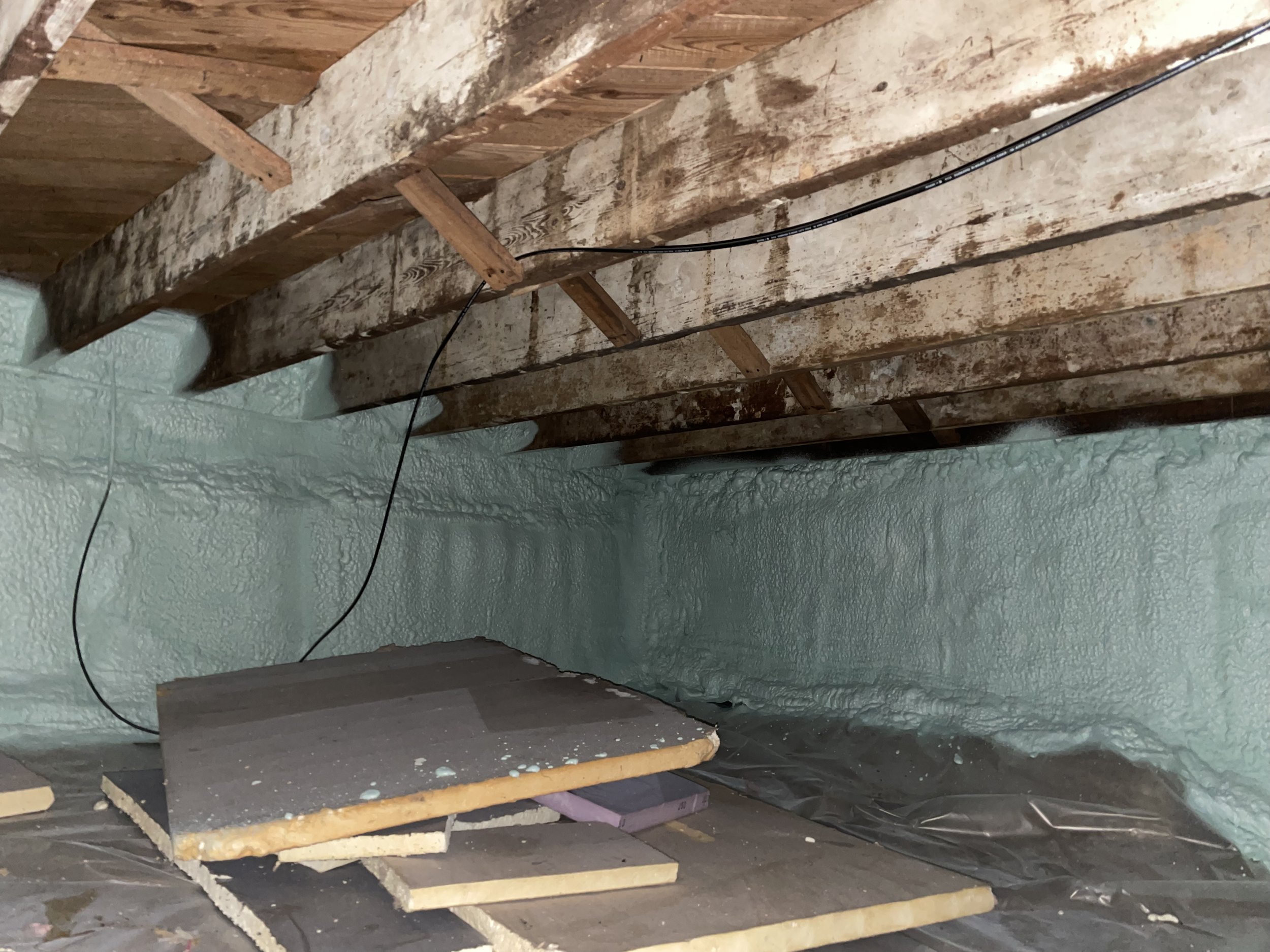
What’s Spray Foam Insulation?
Spray foam insulation is composed of two chemicals that, when combined, react and expand to create a foam insulation material. It can be categorized into two types: open-cell and closed-cell foam. Open-cell foam is softer and less dense, while closed-cell foam is denser and provides a higher R-value (thermal resistance).
What are the different types of spray foam insulation?
There are two main types of spray foam insulation: open-cell and closed-cell foam. Here's an overview of each type:
Open-cell/Low Density foam insulation:
Structure: Open-cell foam has a less dense structure with interconnected air pockets. The cells are not fully closed, allowing air and moisture to penetrate the material.
Expansion: It expands to about 100 times its initial volume during application.
Insulating properties: Open-cell foam has a lower R-value (thermal resistance) compared to closed-cell foam.
Benefits: It provides excellent sound absorption capabilities, making it suitable for noise reduction. It is also more flexible and can accommodate structural movement.
Applications: Open-cell foam is commonly used in interior applications, such as walls, ceilings, and attics.
Closed-cell/HighDensity foam insulation:
Structure: Closed-cell foam has a denser and more compact structure with closed, trapped cells.
Expansion: It expands to about 30 times its initial volume during application.
Insulating properties: Closed-cell foam has a higher R-value compared to open-cell foam, offering better thermal insulation.
Benefits: It provides superior structural integrity, acts as a moisture barrier, and offers greater resistance to water, air, and vapor transmission.
Applications: Closed-cell foam is suitable for various applications, including exterior walls, foundations, roofs, and areas that require higher insulation performance or moisture resistance.
Both open-cell and closed-cell spray foam insulation offer benefits in terms of insulation and air sealing. The choice between the two depends on specific project requirements, such as desired R-value, moisture control needs, budget, and local building codes.
OPEN CELL or Low Density SPRAY FOAM pROS AND cONS
Pros of Open-Cell Foam Insulation:
Cost-effective: Open-cell foam insulation is generally less expensive than closed-cell foam insulation, making it a more budget-friendly option.
Excellent sound absorption: The open-cell structure of the foam helps to absorb sound waves, reducing noise transmission and creating a quieter indoor environment.
Flexible and adaptable: Open-cell foam is more flexible and can accommodate structural movement without compromising its effectiveness.
Moisture vapor permeability: The open-cell structure allows for moisture vapor to diffuse through the insulation, helping to manage moisture and prevent condensation.
Energy-efficient: Open-cell foam insulation provides good thermal insulation, reducing heat transfer and improving energy efficiency in buildings.
Cons of Open-Cell Foam Insulation:
Lower R-value: Open-cell foam has a lower R-value compared to closed-cell foam, which means it offers slightly less insulation per inch of thickness.
Less dense: The less dense nature of open-cell foam may make it more susceptible to water absorption and potential moisture-related issues in areas prone to high humidity or water exposure.
Limited moisture resistance: While open-cell foam has some moisture vapor permeability, it is not a moisture barrier. In areas with significant moisture concerns, additional moisture control measures may be necessary.
Reduced air barrier properties: Open-cell foam provides some air sealing benefits but may not offer as effective an air barrier as closed-cell foam, potentially allowing air leakage (what’s air leakage?) if not properly installed.
Structural support limitations: Open-cell foam may not provide the same level of structural support as closed-cell foam, and additional structural components may be required in certain applications.
It's important to assess your specific needs, climate conditions, and budget when considering open-cell foam insulation. Consulting with a professional insulation contractor can help you make an informed decision and ensure proper installation for optimal performance.
Closed CELL or High Density SPRAY FOAM pROS AND cONS
Pros of Closed-Cell Foam Insulation:
High R-value: Closed-cell foam insulation has a higher R-value per inch compared to open-cell foam, providing superior thermal insulation and energy efficiency.
Excellent moisture resistance: The closed-cell structure of the foam prevents water vapor from penetrating, making it highly resistant to moisture and minimizing the risk of mold or water-related damage.
Enhanced structural integrity: Closed-cell foam is rigid and provides added strength and structural support to the building, making it suitable for applications where structural stability is important.
Effective air barrier: The compact nature of closed-cell foam makes it an excellent air barrier, reducing air leakage (what’s air leakage?) and improving overall building air tightness.
Versatility: Closed-cell foam insulation can be used in various applications, including roofs, walls, basements, and areas prone to exposure to moisture or extreme temperatures.
Cons of Closed-Cell Foam Insulation:
Higher cost: Closed-cell foam insulation is generally more expensive than open-cell foam insulation due to its higher material costs and installation complexity.
Reduced sound absorption: Closed-cell foam is less effective at absorbing sound compared to open-cell foam, so it may not provide the same level of noise reduction.
Limited flexibility: The rigid nature of closed-cell foam can make it less flexible and more challenging to work with, especially in retrofitting or irregularly shaped areas.
Potentially higher environmental impact: The production of closed-cell foam insulation often involves blowing agents with a high global warming potential (GWP), which can contribute to environmental concerns.
Professional installation required: Closed-cell foam insulation requires precise installation techniques and equipment, making it necessary to hire experienced professionals for proper application.
When considering closed-cell foam insulation, it's important to assess the specific requirements of your project, including insulation needs, moisture control, budget, and local building codes. Consulting with a professional insulation contractor is recommended to ensure the appropriate insulation choice and proper installation for optimal performance.
Upgrade your home with the power of spray foam insulation! Experience the ultimate in energy efficiency, comfort, and cost savings. Say goodbye to drafts, high energy bills, and noise disturbances. Our professional insulation experts are ready to transform your home with expert installation. Take the leap towards a more sustainable future. Contact us today and unleash the benefits of spray foam insulation for a healthier, quieter, and more efficient living space. Don't wait, start reaping the rewards of spray foam insulation now! Before choosing, it is recommended to consult with Smart Energy Professionals first so we can assess your specific needs and provide guidance on the most suitable insulation solution for your project. Schedule an energy audit today or give us a call if you have any questions!

